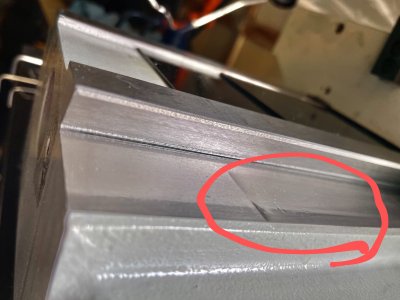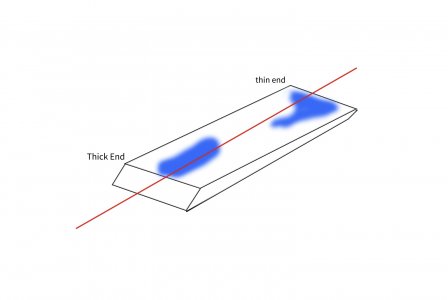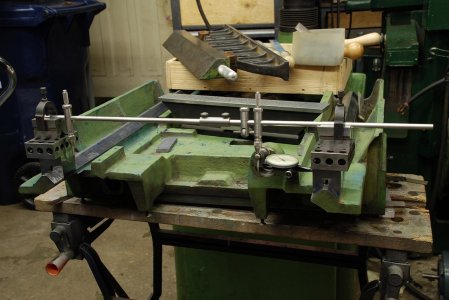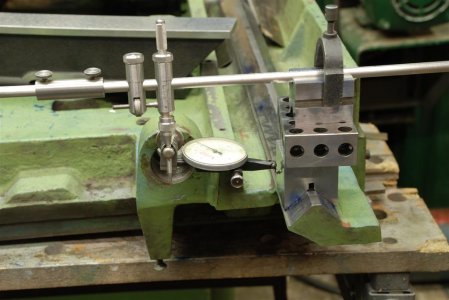Hello All,
Finally managed to disassemble my mill tab to be able to focus on the saddle gib issue. The y axis gib was rocking up and down when tightened and there’s a very long thread discussing the potential causes of the issue which can be found here https://canadianhobbymetalworkers.com/threads/motion-when-locking-the-axis.7438/post-111773
Here’s what I found out
-The front of the gib (thicker end) rocks up and down with very minimal movement of the thinner end, it’s definitely not making full contact with the dovetail
-the side facing the dovetail is not flat as checked against my surface plate

-it seems that the issue is that the gib is pivoting up and down along it’s lengthwise center line, there is evidence of very faint wear on the dovetail. Not sure if it’s visible but there is a slightly darker line along the dovetail towards the top seems to match the cluster of high spots from blueing the gib

I plan to scrape the high spots off at least to get the gib flat on one side and see if the up/down movement goes away and I get the saddle running smooth. Any thoughts?
Finally managed to disassemble my mill tab to be able to focus on the saddle gib issue. The y axis gib was rocking up and down when tightened and there’s a very long thread discussing the potential causes of the issue which can be found here https://canadianhobbymetalworkers.com/threads/motion-when-locking-the-axis.7438/post-111773
Here’s what I found out
-The front of the gib (thicker end) rocks up and down with very minimal movement of the thinner end, it’s definitely not making full contact with the dovetail
-the side facing the dovetail is not flat as checked against my surface plate
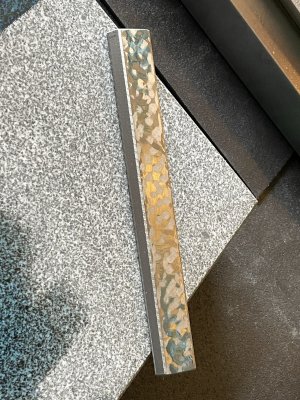
-it seems that the issue is that the gib is pivoting up and down along it’s lengthwise center line, there is evidence of very faint wear on the dovetail. Not sure if it’s visible but there is a slightly darker line along the dovetail towards the top seems to match the cluster of high spots from blueing the gib
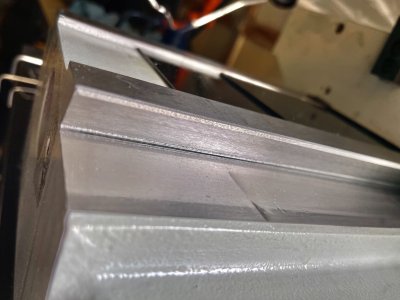
I plan to scrape the high spots off at least to get the gib flat on one side and see if the up/down movement goes away and I get the saddle running smooth. Any thoughts?

